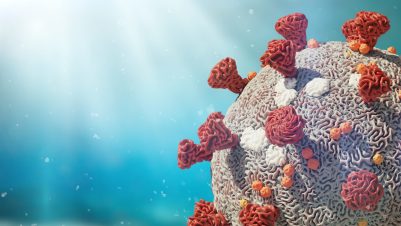The British Veterinary Zoological Society Conference was held in Birmingham from 9 to 11 November 2018. The wide-ranging programme covered zoo, wildlife and exotic pet health, with sessions on nursing, rehabilitation and surgery, as well as career advice for students. Delegates left the conference informed about a variety of methods being used to tackle unusual health issues.
In her talk, Ruth Cromie, Wildfowl and Wetlands Trust’s Head of Ecosystem Health, asked whether vets should be concerned about biodiversity loss. The answer, of course, was a resounding yes. Environmental disruption leads to a loss of ecosystem services and biodiversity, and therefore an increased disease risk, Ruth explained.
The theme of the talk was making the work of veterinary professionals count – how can we look at what the drivers of diseases are and use that information to promote change in human activities?
Problem analysis
Ruth used lead poisoning as a case study throughout the talk – an issue that is largely caused by a human behaviour; hunting. Lead is a non-specific poison and there is no “safe level” at which it can be consumed, she emphasised.
The Wildfowl and Wetlands Trust calculated that, in the UK, about 10,000 tonnes of lead enters the environment from ammunition every year. Lead ammunition is today’s primary source of wildlife exposure to the metal. The major exposure route is through the ingestion of lead pellets directly from the environment, Ruth said. And the effect is significant: 75,000 wildfowl in the UK die of lead poisoning each winter. It has sub-clinical and welfare effects on many more birds, and wildfowl are not the only species affected.
Lead is also a risk to human health; it is a One Health issue, Ruth said. Lead ammunition pellets fragment into tiny pieces, which remain in the meat and may be consumed.
The best form of mitigation would be a switch to non-toxic ammunition. For these sorts of issues, Ruth recommended mapping out the stakeholders and looking at where the costs lie. Currently, the main costs of lead poisoning are with non-ammunition users – the conservation community, scientists and wider society. In a non-toxic future, the costs would be shifted to shooters and manufacturers, Ruth said. These changes would bring benefits for manufacturers too, for example: reduced reputational risks, promotion of shooting as sustainable and healthy, and more birds to shoot.
Social science
Tackling this sort of ecosystem health problem is about human behaviour change, and social science methods must be employed. “We either need to be upskilling ourselves or working with people with these skills,” Ruth said.
In the lead poisoning case, questionnaires have been useful to find out why hunters use lead ammunition. “There are lots of dead birds we never see,” Ruth said, and there is a perpetual narrative (often fuelled by the media) that it isn’t a problem. She advocated the use of Q methodology to explore the perspectives of different stakeholders. It’s important to map the problems and goals, how you could get there and who the partners are who can help. Use a theory of change, she urged. Consider how you can change behaviours of all different stakeholders.
Communication and engagement
Persuasion of customers involves behaviour change, which is very complex. To make waves using this method, having good interpersonal skills is essential, Ruth said, encouraging the use of active listening. People don’t usually change their behaviours based just on evidence – the information needs to be disseminated persuasively.
There is little point in an anti-lead ammunition message coming from somebody from a welfare trust. For this project, the team made a film using hunters with the same values discussing their mindsets. Communication is also important to facilitate dialogue; sometimes, she said, in having a conversation with somebody, they self-reflect and alter their viewpoints with little active persuasion.
Make space for creative thinking and provide the opportunity to think of different ways to engage stakeholders, Ruth advised. If there is somebody in the team with good storytelling skills, use them to spread the message.
A total switch to non-toxic ammunition has never happened just with persuasion; policy alterations have been necessary to make the change. Advocacy and persuasion are important skills here. Other useful methods identified in the lead case have included: consensus statements, conferences, conventions and open letters.
Conclusion
To conclude, Ruth reiterated that the movement against lead ammunition is only going in one direction. Though things may not be moving as quickly as she would like, progress is being made. She recommended that for any ecosystem health programme, theories of change should be planned and stakeholders and barriers to change identified. The process involves lots of skills and “often in these cases, ‘soft skills’ are the most important”.











